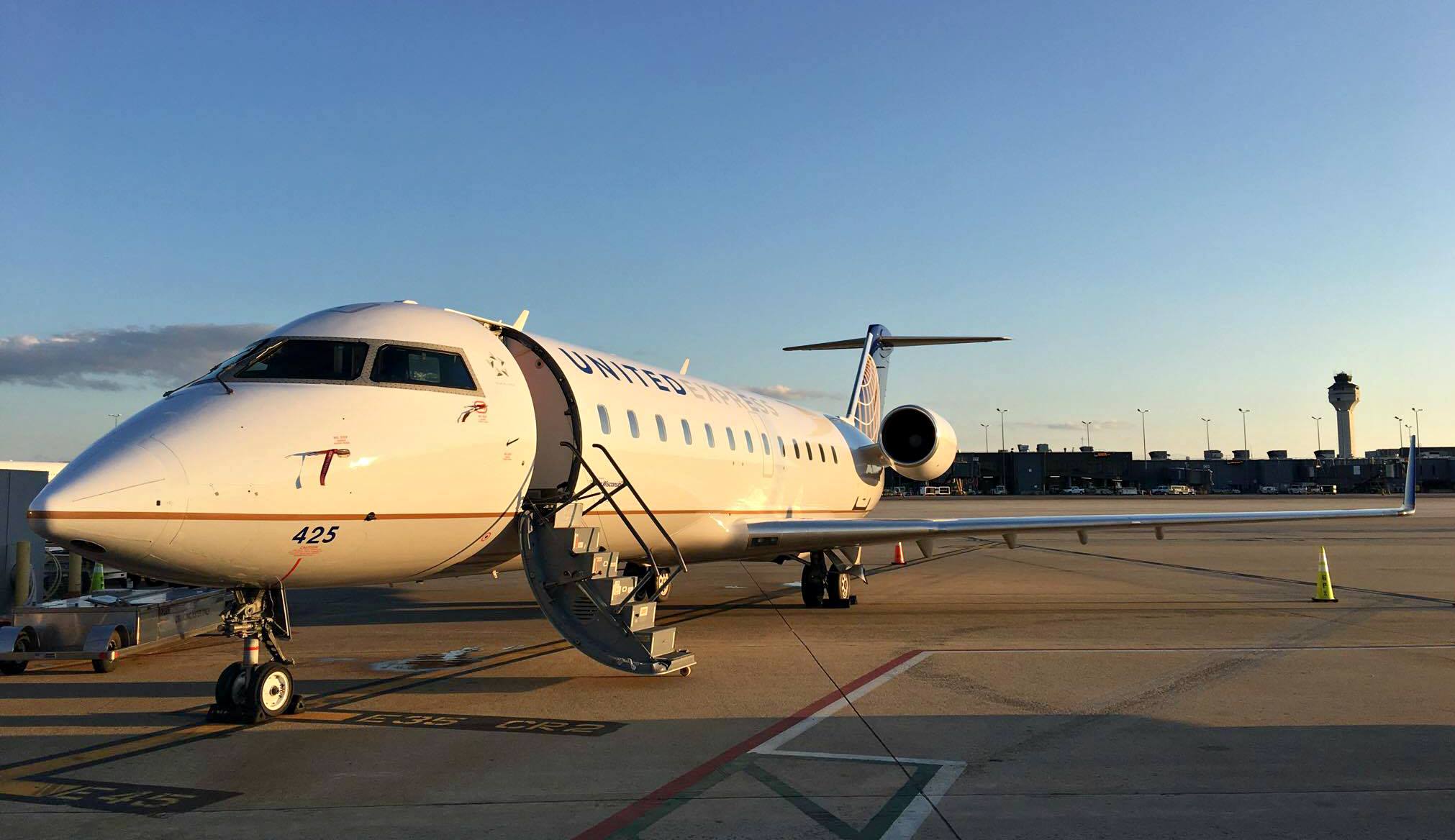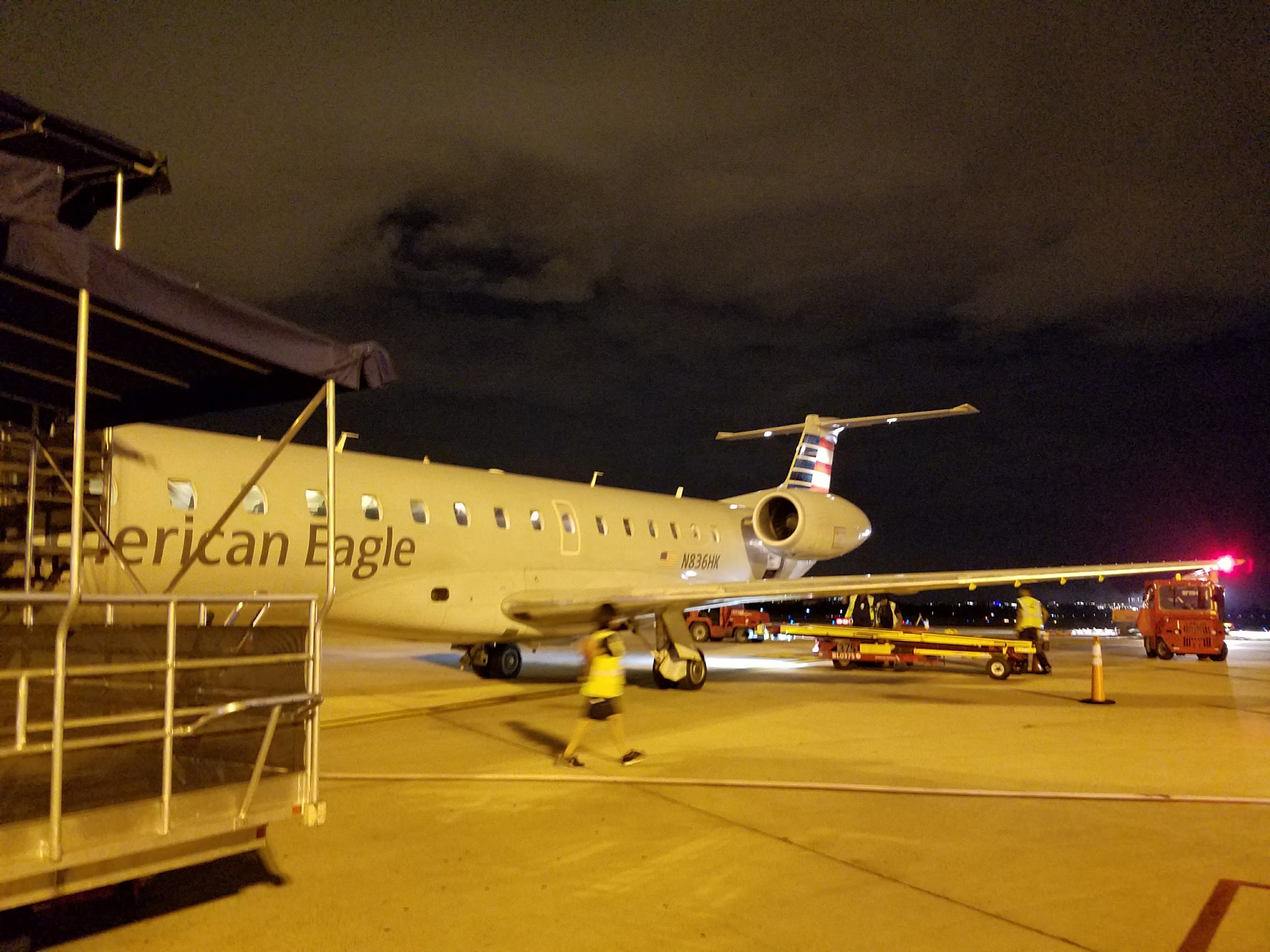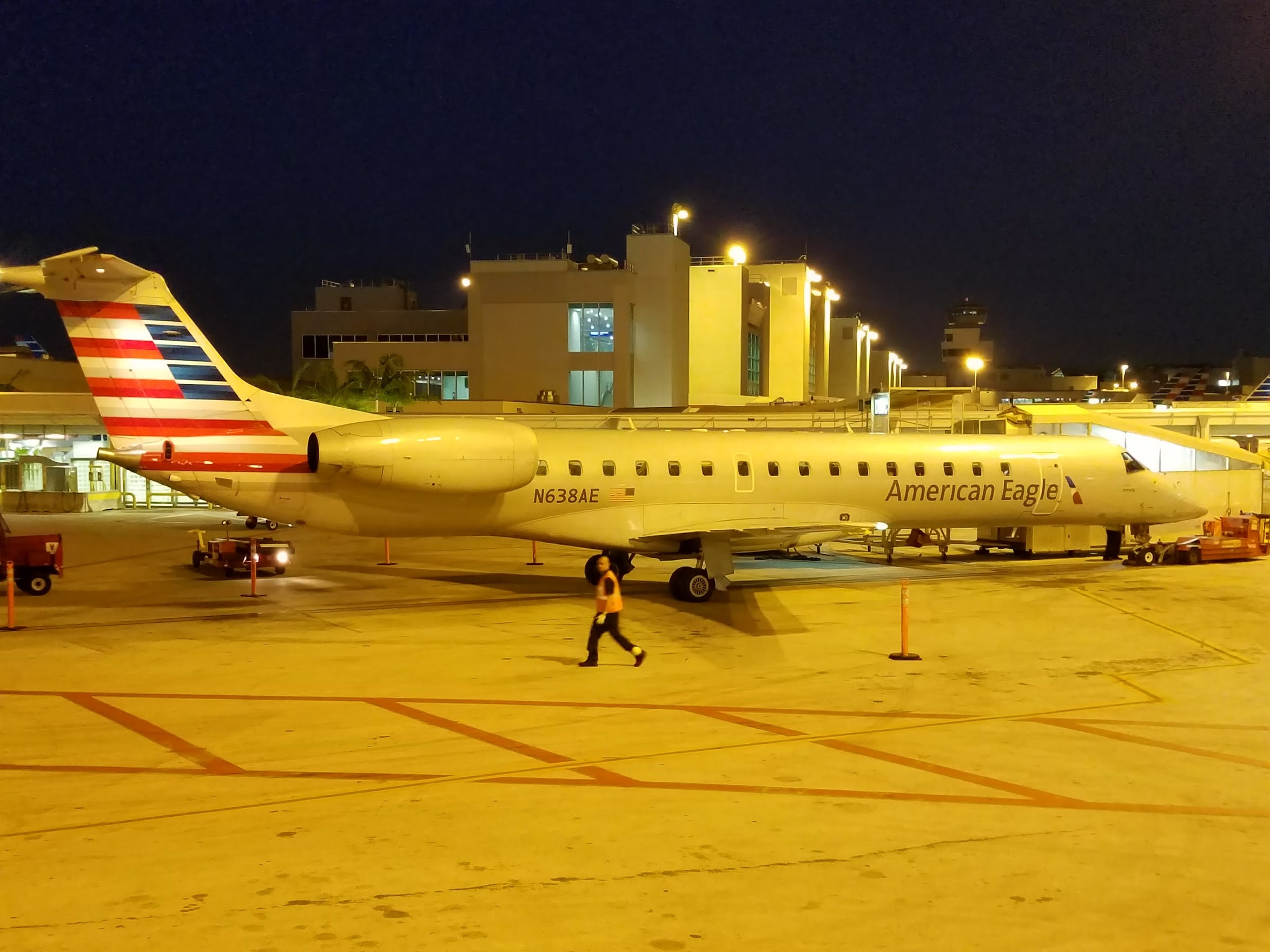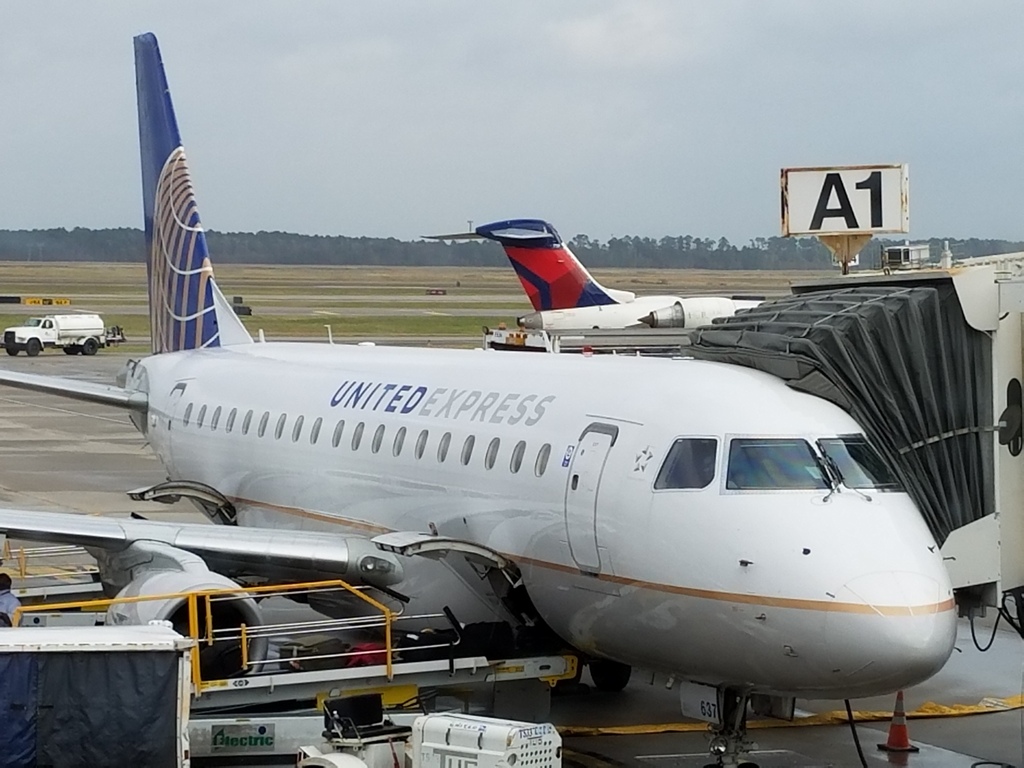The Department of Transportation warns that small airports could lose their subsidies next week as a result of the government shutdown.
Here’s the notice:
If the department is unable to pay EAS carrier subsidies beyond October 12, 2025, by this Notice, we will relieve all EAS carreirs of their obligations under all EAS orders beginning on October 13, 2025, until such time as funding is restored. Air carriers that continue to operate EAS flights beyond October 12, 2025, would do so at their own risk as the Department may not be able to pay the contracted subsidy.
- Read this as a play to leverage members of Congress from affected states. Essential Air Service subsidies are a huge bipartisan boondoggle, and none want to be responsible to their consistuents for any loss in air service.
- The agency’s published ‘lapse plan’ shutting down in 2018–19 explicitly kept the Essential Air Service exempt from pause.
- The program shouldn’t exist in its current form and at its current scale. But this isn’t about cutting the program, it’s about applying pressure to end the shutdown without concessions from the administration.
Generally the Department of Transportation pays Essential Air Service “in arrears” per flight, after receiving monthly invoices. Short lapses don’t instantly stop checks, though processing can lag until staff return. What DOT is doing here is saying,
- it won’t enforce contract service levels after October 12
- carriers that keep flying can’t rely on retroactive make-whole payments, and
- the statutory 90-day/30-day “hold-in” rules are effectively suspended by administrative notice during the funding lapse.
Agencies can’t incur obligations in advance of or in excess of appropriations. Ordering “hold-in” flying without money would create an obligation, so DOT is making clear it won’t do that. If a carrier flies anyway, DOT isn’t committing to pay later (although a presumption would be that any funding deal would do so).
What they’re doing in using discretion over available funds in DOT accounts seems legal, and EAS contract language genreally includes a “subject to availability of funds/no liability beyond” September 30 clause. But I wasn’t expected this, because as far as I can tell it’s unpredented.
Still the program itself has become bizarre. The Essential Air Service program was created 47 years ago as a temporary measure to soften the blow of airline deregulation. It provided for a ’10 year transition’ period in which small community service could receive subsidies. The program was supposed to end in 1988.
Now, about 175 communities have been receiving subsidies. More than a quarter of those are in Alaska.
- Generally 30-50 seat aircraft, and usually two roundtrips a day
- Or more frequencies with 9-seat aircraft
Subsidized cities are supposed to have at least 10 passengers per day, though this requirement can be waived. Many of the planes fly largely empty.

Last year’s FAA reauthorization more than doubled funding for the program, with promised increases in future years.
Airports within 210 miles of a medium hub or larger used to be capped at a subsidy of $200 per passenger because obviously why should taxpayers pay for this..? But the latest update to the law more than tripled this to $650 per passenger for airports within 175 miles of the larger facility. In Tyranny of the Status Quo (1984), Milton Friedman wrote “Nothing is so permanent as a temporary government program.”
People choose to live far away from an airport. And for many of these airports there’s just no justification for subsidies at all.
- When they’re within reasonable driving distance of another airport
- Many of these flights don’t even connect to hubs, so driving and picking up a non-stop is more convenient anyway.
- The average airline passenger has a six figure income, making this reverse Robin Hood
- And flying empty, inefficient planes raises environmental concerns

If you’re traveling out of Pueblo, Colorado you could just as easily drive to Colorado Springs to start your journey. Hot Springs, Arkansas is less than an hour from Little Rock. Decatur, Illinois is less than an hour from both Champaign and Springfield. Why subsidize service 110 miles away to St. Louis? The new law did at least restrict subsidies to airports in the contiguous 48 states that are “at least 75 miles from the nearest medium or large hub airport.” But the distance shouldn’t be measured from a medium hub!
- Lancaster, Pennsylvania is about half an hour from Harrisburg
- Muskegon County Airport is less than an hour from Grand Rapids
- Owensboro-Daviess County, Kentucky is under an hour from Evansville, Indiana

Not only didn’t the program die in 1988, it grew to $22 million in 1998 and to a discretionary $155 million in 2018. It was authorized at:
- $340 million for fiscal year 2025
- $342 million for fiscal year 2026 and 2027
- $350 million for fiscal year 2028
The program’s requirement for an average of 10 passengers per day departing an airport can even be waived multiple times under the new law. The DOT can also waive some subsidy limits, too.

The reason this program lasts is concentrated benefits and dispersed costs. Members of Congress and constituents in districts receiving these subsidies care a great deal about them and are willing to exert muscle and treasure to keep them, while the public at large cares very little about the program. At less than $2 per person per year, there’s little incentive for the median American to learn about the program let alone oppose it. But Members of Congress whose districts benefit get onto House and Senate committees responsible for the funds.
Spending on the program had already quintupled over the past 25 years before being almost tripled in this new legislation. It’s grown under both Republican and Democrat-controlled Congresses and administrations. It’s a bipartisan boondoggle. So it’s only fitting that it’s used as a political football during the shutdown.


It’s all because the evil lib-left-radical Dems want trans-healthcare for ‘illegal’ brown folks…
What happens to passengers who get stranded? Is this an “act of God” situation?
In all seriousness, this shutdown will likely end once the ATC in the NYC region nearly all ‘call out sick’ like in 2019. It’s not right that they, the TSA, our military service members, and countless others don’t get paid, while Congress still does. Probably should ‘fix’ that loophole, eh?
For those looking for ‘who’ to blame, lemme ask, who has all the power right now? The Presidency, both chambers of Congress, the highest Court, all the billionaires and mega-corporations… oh, yeah. Not your pal 1990, that’s for sure.
For those seeking ‘why,’ I’ll say, I am impressed that the Senate Democrats have lasted even 6 days, because for an opposition party, those dinosaurs are some of the saddest motherf… at least they picked a winning issue, preventing 20 million Americans from losing healthcare coverage due to the removal of those subsidies to the ACA and Medicare, which would nearly double costs.
I donno, fellas, you can spin this anyway you wish, and I know some you will try… perhaps, you’ll pretend to care about ‘small government,’ while ‘your guy’ spends $20 billion to bail out his friends in Argentina, and to send the military to American cities on manufactured crises… yikes, guys. That ain’t libertarian. That’s excesses of crony capitalism and the road to authoritarianism.
Well, just don’t whine when your small, middle-of-nowhere, EAS-subsidized airport closes, or your flights are significantly delayed or canceled (and, you have no recourse, because we don’t have air passenger rights legislation, like EU261 or Canada’s APPR), because our ATC aren’t getting paid. Oh, and at least 75,019,230 of your fellow citizens tried to warn y’all this wouldn’t go well.
Anyway, gotta go ‘touch grass’ and ‘cry harder’… treatments for my ‘TDS.’ Good luck to those of you with ‘ODS’… t’was that tan suit, right? And the mom jeans… darn.
Could you perhaps just consider proofreading before posting? What does “unpredented ” mean? That’s not a word. Grammar and other spelling issues abound. Why undermine otherwise good reporting with sloppiness?
You’re trying to be sarcastic but this is about the most factual statement you’ve made here (to be fair, there’s not much competition)
Congrats?
Does the US have fly-in communities, i.e., places where there is actually no access by road? We have those in Canada and subsidize the flights that operate into them. But if there are roads, I agree with the author that there are more economically efficient ways to run public transportation. Why not operate a bus service twice a day from Lancaster, PA to the Harrisburg, PA airport, for example. Even subsidizing the bus would probably be cheaper than subsidizing an airport.
@FNT Delta Diamond — Don’t worry, Delta’s good for it, right @Tim Dunn? Interesting point…wonder if travel insurance would deny coverage on this basis… they always find a way to get outta paying, don’t they.
@Jason — Get over it. What is wrong with folks like you who just come here to whine about ‘proofreading’ or ‘AI.’ Like, my dude, contribute something more meaningful, like, do you have a ‘hot take’ on Gary’s points, or meta commentary? C’mon.
@Coolio — Did you forget to ‘@1990,’ or were you referring to someone else?
May I ask, where are you based (USA?), and what are your sources for believing the underlying statement in my first comment (Fox, OAN, Newsmax, YouTubers?)
I’m based in NYC, and I read our ‘local’ newspaper, for example. We named a part of our town after it. Some refer to it as ‘Times Square.’ I don’t go by there much; a bit touristy.
I know there are some who frequent VFTW that are not based here, so, it’s always interesting to learn more about who’s who, while still preserving relative anonymity, because occasionally it leads to why’s why.
For instance, @Not Scott (“not an American”) and @Mantis (“moved back to Asia”) recently admitted they don’t live in the USA and/or are not Americans; yet, they seem to have strong opinions about us, often far-right extreme views. Then there’s resident bigot @Walter Barry. Pretty sure he’s literally foreign disinformation agents, just stirring the pot.
I flew private over the weekend and there were multiple ATC frequencies that were unmonitored while others were nonstop controller directions so that you couldn’t get a word in if you had to.
@Tim Dunn — I’d ask whether it was Delta Private Jets, but I thought they ceased operations in 2020. So, was it Wheels Up, instead?
Why is the US Government paying for flying less than ten people per plane? Living in a remote area is a choice and there are benefits. But one of the downfalls would be not near access to air travel. Either be prepared to drive a distance to the nearest airport if needed or if one flys enough move to an area that can sustain commercial service without subsidies. Outside of Alaska and parts of Texas and CA everyone is within a four hour drive to a viable airport.
There’s quite a difference between the title, “…DOT Tells Airlines To Walk Away”, and the actual DoT statement, “If the department is unable to pay EAS carrier subsidies beyond October 12, 2025, by this Notice, we will relieve all EAS carreirs of their obligations under all EAS orders…”. The title isn’t simply misleading or subject to interpretation, it’s incorrect.
BTW – If the President and the republicans had “all the power” the government would be open right now. Clearly the left does have some power since it is this group that will ultimately decide when the government reopens.
Personally, I am in no rush. I’m willing to wait until AOC gives the word and allows the senate minority leader to make a move.
@George Nathan Romey — You’re not wrong, George. Perhaps, we could also stop subsidizing ‘big oil,’ while we’re at it. Like, if we’re really going this ‘libertarian’ route, let the ‘free market’ decide which source of energy folks ‘want’ as some may prefer solar, wind, hydro, geothermal, or their very own backyard nuclear power station… like, God intended. Gee, why not go full anarcho-libertarian, and suggest that ‘taxation is theft’… lest we become full-blown ‘sovereign citizen’ types… Or, if you care to live around others, we may recall the wise words of George Costanza: “We live in a society!”
@David — The same ‘starve the beast’ Republicans who, like Grover Norquist said in 2001, ‘want to reduce it to the size where I can drag it into the bathroom and drown it in the bathtub,’ you mean? Nah, sounds like those folks are very much in-charge, and are doing what they’d do anyway, regardless of the shutdown.
As to AOC, clearly, folks such as yourself are afraid of a younger, more articulate leadership that happens to look and sound like actual Americans in 2025, who also, yes, have worked real jobs, like at restaurants, maybe as bartenders, and understand the plights of those who can barely afford their own healthcare in our broken system. Yeah, I wish she’d run for Senate in NY; I’d vote for her over Chuck or Gillibrand, any day. And, I doubt you live in NY state, so you don’t really get a say on this, now, do ya? We also got a mayoral election coming up in NYC. Wanna weigh-in on that, too? I bet your (and some others) opinion is on that totally ‘grounded’ and not at all ‘unhinged.’
The workers should get paid during a shutdown but Congress shouldn’t nor the President and his staff. Then things would get done.
Congresscritters should be working remotely from their district offices, or failing that, dedicated spaces in their respective state capitals.
@sunviking82 — While I certainly agree, the real money for the President and Congresspersons who are corrupt is to do insider trading and accept legal bribes through lobbying… all of which should be stopped. It’s a ‘both sides’ problem, and there is bipartisan support to ‘fix’ this problem, but it is so unlikely to pass anytime soon. See, The Restore Trust in Congress Act (House), brought by Reps. Seth Magaziner (D-RI) and Chip Roy (R-TX); see also, The ETHICS Act (Senate), led by Josh Hawley (R-MO). Yeah, I know, broken clocks are right two times a day…
@ Gary — Where can one find is a list of these 175 airports?
I fly a very interesting Essential air service route . Its operated once a day with a A220 !
Its a hoot . Cant find too many mainline aircraft operating Essential routes
What’s interesting about this is who will be impacted. EAS communities are rural and largely Republican. Even the less rural areas like Lancaster, PA (pop 550K) went with the GOP.
This is what America voted for, so here we are. If a few people have to drive an extra couple hours so that tens of millions of American do not lose access to life-saving healthcare I can live with that.
It’s interesting that that majority of EAS airports are in area that went for Trump. This is what America voted for, so here we are.
Honestly, I can live with a few people being inconvenienced so millions do not lose access to life-saving healthcare. And, let’s be clear, this is not about illegals accessing Medicaid. This is just an approach to provide tax cuts to people who don’t need them.
@Parker — That’s a good point (and I know we see eye-to-eye on most things here). A lot of folks voted against self-interest, whether they knew it or not; and, I’d argue, most of them did know better, because they’d been through this once before. For instance, the American farmers who’ve gotten screwed by the trade war and China’s prohibition on buying their soy/other crops; they don’t care because they expect a bailout (oh, the irony, that they like ‘socialism,’ after all.) It’s all weaponized incompetence, corruption, and hypocrisy. Someone’s clearly getting rich off all this, and it ain’t most of us. Tired of ‘winning,’ yet? It’s not right or fair to those harmed by these bad policies and bad actors. Those at the top ‘know better’ most of all.
Great. Everybody should pay the cost of their own travel, and bear the expense of living in a remote place.
@Mak you do realize the roads you drive on, the sidewalks you walk in and the infrastructure to support your flights have all been subsidized by others. It’s call being a part of a community.
@1990 we all know who’s getting rich from all of this. Last week Miami-dade College GAVE Florida a property next to their famous valued in the millions for Trump to build his presidential library and a resort hotel. Property paid for by tuition and tax dollars.
@Mak you do realize the roads you drive on, the sidewalks you walk on and the airport infrastructure you use has all been paid for through taxes and subsidies coming from people who don’t use those services. It’s call being a part of a community.
https://www.transportation.gov/policy/aviation-policy/current-list-eligible-eas-communities (non-Alaska/Hawaii)
https://www.transportation.gov/off ice-policy/aviation-policy/alaskan-essential-air-service-determination (Alaska)
OK, several questions, but let’s start with:
“Many of these flights don’t even connect to hubs”
Where are you getting this? Because looking at a list of the EAS routes, pretty much everything outside of Alaska is going to a hub. (The exceptions being mostly airports in Montana which all go to BIL, where I would argue it makes more sense to sort passengers based on destination rather than sending everyone to either DEN or SEA.)
“Many of the planes fly largely empty”
Do you have a source for this? I’ve only been on a handful of EAS routes, but I was surprised by how many people were on all of those flights when I was expecting them to be empty.
I would also think that cutting services to rural populations is maybe not the most obvious way to try to exert pressure on Democratic members of congress. But who knows! The Republicans have already cut healthcare subsidies to rural populations and are pursuing trade policies that are causing pain for rural farmers.
@Parker As a person who doesn’t drive a car I am acutely aware of the fact that roads are unfairly subsidized and think that to every extent possible users should be paying to use the roads that they drive on – it is in fact an outrage that the cost of car registration is not higher and should be based upon usage and size of the vehicle rather than a flat fee whether registering a Mini or an Escalade which provides terrible malincentives.
Expecting other people to pay for services you use is immoral, but particularly outrageous when people who enjoy living in wide open spaces in rural areas count on the sweat of people living in crowded cities to pay for the costs of that privilege.
1990,
GA, not part 135.
Trying to come to financial solutions that work for 350 million Americans is no small task esp. since Congress gets the lowest marks of any branch of government.
Part of EAS could easily be scrapped and it is doubtful that even a majority of people that live in areas served by EAS airports even use them. Democracy, however, is not driven by an assessment of whether the most people win.
Chances are that other forces will force a resolution and the bloated EAS program will live to see another day.
and employees that are considered essential such as controllers should be paid. You can’t tell someone they are essential for work but their pay can wait.
@Mak — Explain further. You ‘don’t drive,’ because… you live in a society that has excellent public mass transit? (Sounds like socialism, the good kind.) Or, your license was revoked? (Uh oh.) Or, you pay someone to drive you? (Ah, Mr. Moneybags ova’ere!) Or, you are Henry David Thoreau at Walden Lake, all ‘self-reliant’ but also using the internet… (inconsistent, but respect.)
@Tim Dunn — Oh, how exciting! And 100% on your comments about ‘essential’ workers getting paid. Should’ve legislated that fix with the bill back in 2019 following the last shutdown.
@ Gary — Thanks!
@Mak – by your definition:
1. I don’t have kids so I should not have to pay to educate other people’s children.
2. I don’t captain a boat so I should not have to pay taxes for drawbridges.
3. I don’t visit national parks so I should not have to pay taxes for them.
4. I don’t eat certain fruits and vegetables so I should not be forced to pay taxes to subsidize farmers.
Funny thing about being a part of a community is that we are all in this together. We are not supposed to be a bunch of selfish, entitled people who only care about ourselves and what’s in it for us. Guess I was raised better.
“1990 says:
October 7, 2025 at 6:20 am
It’s all because the evil lib-left-radical Dems want trans-healthcare for ‘illegal’ brown folks…”
Hello, is there no moderation of this forum at all?.. why do we allow this to be used as a platform to push misinformation and spread a racist agenda?
@Bryan — You’re right that I should’ve included the “/s” above, because I absolutely abhor that cynical, disgusting propaganda from this administration.
Not to ‘explain the joke’ here, but I was mocking those, like @Coolio, who actually believe and support that nonsense. I knew they couldn’t resist.
For my actual ‘take’ on the topics at hand, please see my second comment above, starting with ‘In all seriousness…’ I get into details there.
And, Gary, I know you don’t usually micromanage us, but if you find my first comment offensive, you can remove it, but please note, it is literally currently the Republican’s position on this shutdown debate. I know, it’s insane (and patently false), but that’s what they’re saying, publicly. Yeesh.
@Bryan — I’ll add, you seem like a decent fellow, so you’ve probably already watched it, but if you haven’t, Jon Stewart’s monologue on this Monday’s The Daily Show, gets into those absurdities. It’s on YouTube. Glad he’s back at least once a week. Anyway, take care out there.
One argument presented is essentially: “you can’t complain about EAS because you use roads (or whatever) paid for by others.” But, I respectively assert that you may have missed an important point. Thus, this story.
The people who live in “Thesticks” have to drive 80 minutes to “Bigtown.” They want the government to pay big dollars for a road that cuts the trip in half. Should it be done? What if Thesticks is a village of 750? How about 2,000? Instead, what if Thesticks is a private estate with a population of 4 (one family). Can we say no to a government expenditure that helps thousands who choose to move far away? Can we say yes to thousands, but no to 4? Of course; we must. I don’t get to argue you need to subsidize my travel to make it easier because we subsidize other things.
This is no way equivalent to having me pay for public schools or transport I do not use. You need a better argument
Imagine going to pay your rent or mortgage, and you are told that instead of 2k you normally pay, you now owe $2500. When asked why, they respond that they are charging you that extra money to pay for illegals’ rent. This is exactly the same thing dems want to do with healthcare, the only difference being, is that you have been programmed to not notice a few extra dollars out of your paycheck at a time. However, now that we’ve had that few extra dollars reach to unaffordable levels, it is time to cut it off and give that money to US citizens. Mexico has universal healthcare, we do not. 37 percent of illegal aliens in the US are from Mexico, they can go back and be treated in their own country for free. Let’s start there.
tell democrats to take the clean csr, no $1.5 trillion for illegals and trans healthcare for 90 days. this is really capitulation to the far left communists as schumer is scared. regardless tell dems or the few needed to vote for the clean csr for the country. if there is legitimate health care concerns that don’t include trans crap and illegals, i’m sure that can be fixed quick. and trump said that.
@This comes to mind — You got a point there, or just more ‘nuh-uh’ and ‘um ackchuallee,’ cuz that ain’t it.
@Michelle Haberman — Merely getting rid of all the brown people won’t fix our nearly broken healthcare system. Gotta think bigger than that, rather than just scapegoat. I’d say, start with the excesses in the insurance industry and bloated hospital administrations; they’re the ones jacking up prices on all of us. We need more healthcare less bureaucracy, and less middlemen. It’s always been a class war, not a culture war.
@Raphael Solomon: You wrote, “Does the US have fly-in communities, i.e., places where there is actually no access by road? We have those in Canada and subsidize the flights that operate into them.”
While commuting from Michigan to Utqiagvik (formerly Barrow – BRW), Alaska, which lies above the Arctic Circle, to pursue my degree at Ilisagvik Tribal College, I found that most communities rely on commercial aviation.
Here is a link to the fact sheet regarding Essential Air Service in Alaska, from which I have included an excerpt.
https://www.alaskaasp.com/media/4528/aasp_eas_fact_sheet_final.pdf
Information on Ilisagvik Tribal College:
https://www.ilisagvik.edu/
Why is the Essential Air Service Program Vital to Alaskans?
Only 18% of communities in Alaska are connected to the road system; the other 82% rely on aviation and rough overland
or water travel to access mail, medicine,
and other services. Many of these
communities are subsistence-based
rural settlements and Alaska Native
villages. Of the 61 communities in
Alaska with air service subsidized
by the EAS program, only six are
connected to the road system. All six
are over 100 miles away from the
nearest hub airport by road, most
of which are narrow gravel roads. EAS allows the people
in these communities to continue living on the lands their
families have been connected to for generations.
Alaska-Specific Rules and Exceptions
To address the remote nature and small population size of
most communities, the original legislation exempted Alaska
from certain EAS requirements including fewer required
passenger seats, number of flights per day and service to a
non-hub airport. These special rules for “basic essential air
service” in Alaska mean that air carriers do not have to waste
money flying larger planes or making more frequent trips than
necessary. In the contiguous United States, basic service is two
round trip flights per day to a medium or large hub using 30 to
50-seat aircraft. In Alaska, most EAS contracts are for less than
two flights per day, and 90% utilize aircraft
with only 3 – 9 passenger seats.
Gotta say, @Ken A, you really are the best. Fascinating stuff.
So Ken A, it seems simple. Alaska should take the money they rebate to citizens (didn’t look it up, I assume they still do) from oil revenue and pay for EAS. I’m sorry but my basic attitude is: if you want to live “there,” enjoy being “there,” then pay for being “there.” Can’t enjoy living “there” without taking my money, then move? I care zero about “ancestral land” arguments. If you want to be be “there,” absord the consequences.
I appreciate the data, and am addressing the ideas, not you.
@This comes to mind — To whatever that was, there’s no ‘there’ there.
Congress doesn’t care because I bet they’re still getting paid during the shut down. The lower people trying to do their jobs are the ones who will suffer because of the shut down. Congress needs to loose their pay until they wake up and get things straighten out.
@mark you really have drown in the Kool-Aid. Trump’s Big Beautiful Bill will result in:
1. 10 million AMERICAN CITIZENS (1 in 7) losing eligibility for Medicaid services.
2. The Congressional Budget Office estimates that 11.8 million more AMERICAN CITIZENS would become uninsured by 2034 and 3 million more would not qualify for SNAP benefits.
3. Dozens of rural hospitals have already announced closures or reductions in service due to decreased federal funding, impacting AMERICAN CITIZENS.
4. Medicare cuts that will reduce access to care while increasing the cost of prescription medications a la the “death panels” Sarah Palin warned you about.
So, sorry buddy, but your dog won’t hunt not matter how many times you want to blame this on people you hate. Millions and millions of the most poor, vulnerable and rural people in our country are going to suffer, all because politicians convinced them to vote against their own self-interests. No flights. No healthcare. Poor education. No infrastructure. Just pathetic.